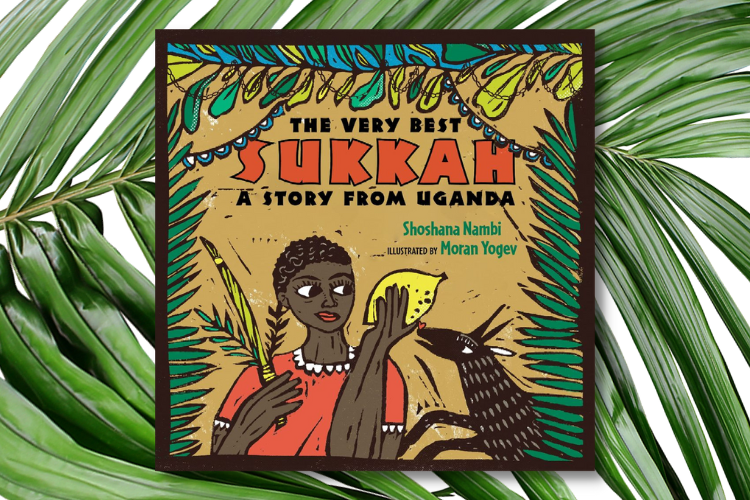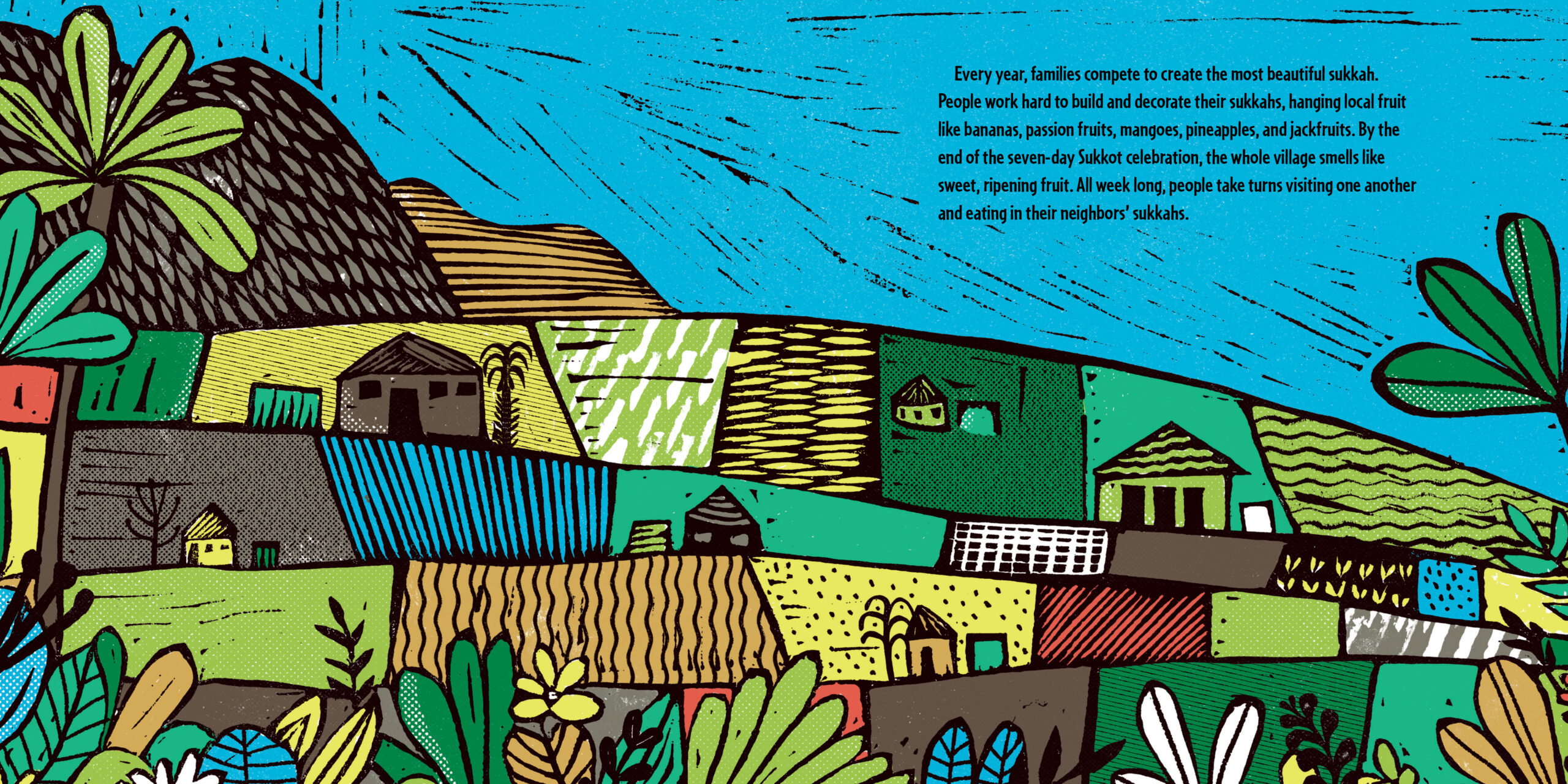
Shoshana Nambi on “The Very Best Sukkah”
Lilith’s Naomi Danis talks to Shoshana Nambi about her beautiful new children’s book, The Very Best Sukkah: A Story from Uganda.
Naomi Danis: Your picture book THE VERY BEST SUKKAH: A STORY FROM UGANDA is an appreciation of the beauty of diversity and unity. Can you tell us about your growing-up family and how your experience influences you as a storyteller?
Shoshana Nambi; I grew up with my grandparents, growing crops like beans, maize, and greens for food. We also had a lot of coffee trees. I would walk alongside my grandfather as he pushed his wooden wheelbarrow to sell coffee at the market. On the way to the market, he would tell me folk stories about hyenas, elephants, and lions, and sometimes stories of how his family ended up in eastern Uganda. At home, my grandparents would take turns telling my brothers and me folk stories. They also used it as an opportunity to make up stories with a teaching message, usually about working hard, treating elders with respect, and being nice to each other. My grandparents didn’t write or read any language, so the stories were passed down orally.
Can you share anything about Moran Yogev’s illustrations that convey aspects of your story beyond words?
Moran Yogev did a beautiful job illustrating the book. I love how the illustrations represent the brightly colored clothes of Uganda. I loved to wear brightly colored dresses as a kid. My dresses were made from the leftover material from my grandma’s dresses.
The landscape and the rolling hills, the beauty of the trees, grass, and flowers, are so captivating. She included Jewish symbols like the Magen David and the Menorah, which people proudly draw on their houses.
Moran and I and the publisher, Lili Rosenstreich, went back and forth, I wanted to make sure we captured the beauty of my community and even people’s physical features., I appreciated Moran’s creativity.


Author Shoshana Nambi (L) and illustrator Moran Yogev (R).
What will it mean to you and your community that you hope to be the first female rabbi in Uganda? How did the Abayudaya religious community come to be egalitarian?
My community is egalitarian! Women, especially the younger generation, are already leaders. Women lead prayers, read the Torah, lead youth groups, and are part of the general leadership of the community. When there are scholarships, young women have the same opportunities as young men to go to school. It was not always this way! I credit Rabbi Gershom Sizomu for the change. There was reluctance to change. My community, just like other places in the world, was and is still in some ways patriarchal. Rabbi Gershom encouraged me to be a leader in the community, assigning responsibilities to me as a young woman to teach Hebrew songs, and Bible stories to the kids and encouraging me and other young women to travel and be part of the youth leadership. After his rabbinic ordination, Rabbi Gershom came back to the community. He told many stories of how he learned from his amazing women teachers and hevruta, study partners, learning how the community benefits when women are given equal opportunities as men have.
I hope that as the first woman rabbi, I can be an inspiration to young women to dream of education and leadership beyond what is available right now.

What can the American and Israeli Jewish communities learn from the Abayudaya experience? And what will you bring back to the Jewish community in Uganda from your Israel and American Jewish experiences?
From Uganda, I learned that religious practice requires commitment and ingenuity. People have been very resourceful in getting what they need for their Jewish practice. The Abayudaya have composed melodies for Hebrew songs and prayers. We have translated most of the psalms into Luganda (one of the local languages) and composed melodies for them that are heavily influenced by local rhythm and instruments. The Abayudaya fashioned their own kippot. The communities have figured out ways to make challah over a fire.
Even though there has been generous support from Jews around America and Israel over the last 20 years; the community has also reminded us that some of our customs and traditions were created before.
I’m already so proud of my community. I hope that I can bring more creativity to Jewish teaching and Jewish prayer, engaging in ways that I have seen in the U.S. I have appreciated how Jewish learning, sermons, and prayers are geared towards people’s life. I also admire that many programs here in the U.S. and Israel are geared towards specific audiences, teens, children, and women; topics of interest that people can choose from. Although I recognize that these take a lot of organization and financing, I know there is beauty in aligning Jewish learning to meet people where they are. Judaism can be general, and also specific to address people’s daily lives and challenges from one community to another. I want to create more possibilities for that. For Judaism to be an inspiration for mental health issues, poverty, domestic violence, and much more.
What are some important similarities and differences between the Ugandan and Ethiopian Jewish communities?
One difference is that the Ethiopian Jewish community has been around for thousands of years and their traditions go way back. The Abayudaya Jewish community started practicing Judaism about 100 years ago. Most of our blend of Jewish and Ugandan traditions is only a century old.



